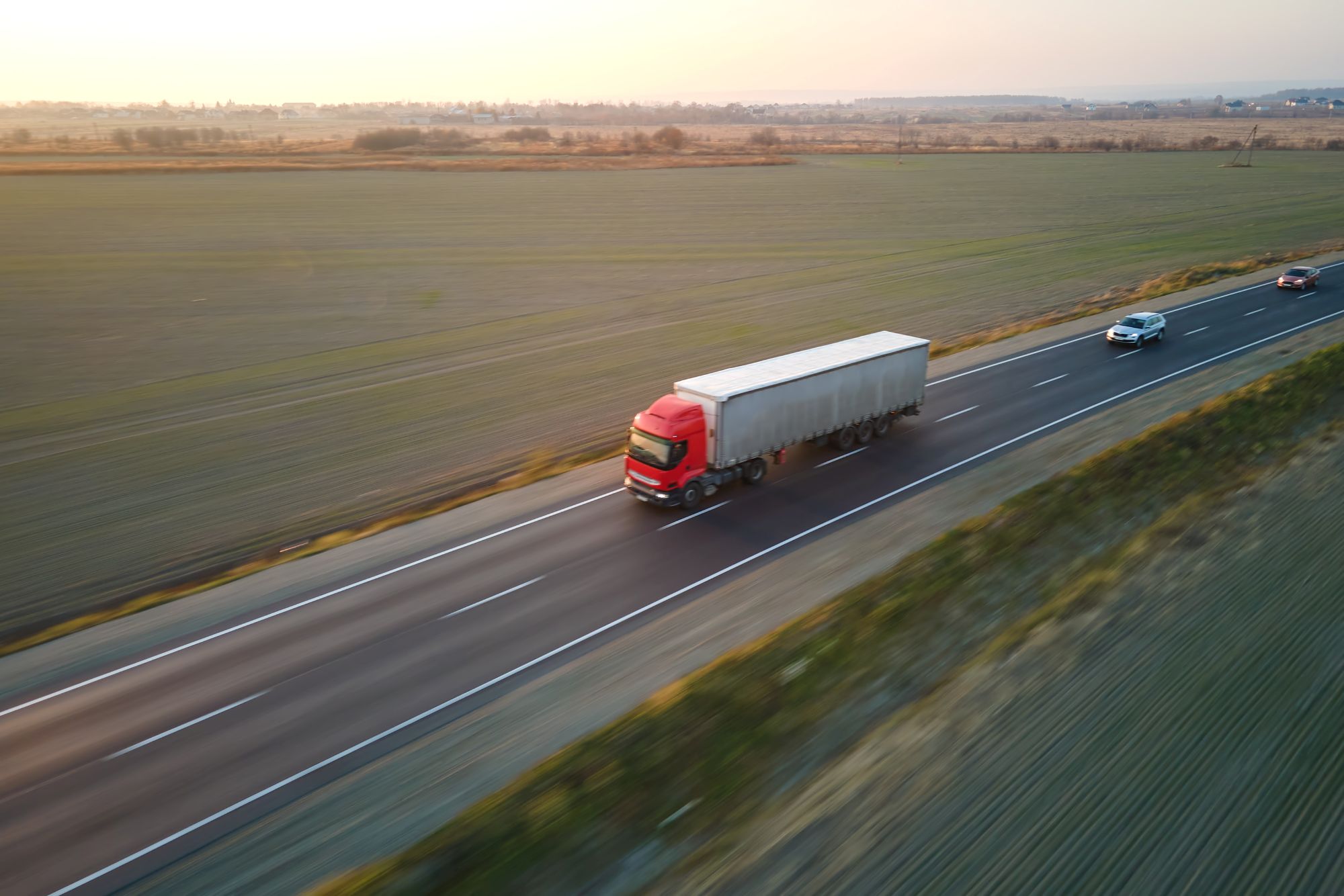
Miranda Blake
Lastbilchaufførernes dag 2025: At give lastbilchauffører en stemme
Oprettet: 22.01.2025
•
Opdateret: 22.01.2025
Den 22. januar 2025 er det HGV Drivers Day. Dagen er etableret af NN1 Personnel (rekrutteringsfirmaer og leverandører af lastbilchauffører i logistikbranchen) og har til formål at fejre chaufførerne og alt det, de gør for økonomien og samfundet.
Uden lastbilchauffører, som ofte oplever forskellige vanskeligheder i deres rolle (herunder at være væk fra deres familier og hjem, lange arbejdstider og rejse i ekstremt vejr), ville vi være uden vores nødvendige produkter og bekvemmeligheder. De har virkelig været helte i løbet af de sidste par år og også før det - pandemien var kun ét eksempel på dette.
Hvordan du markerer dagen, er op til dig. NN1 Personale anbefaler at vise venlighed, f.eks. ved at give chauffører en varm drik eller snakke med dem.
Her hos SNAP er vi altid ivrige efter at give lastbilchaufførerne en stemme. Og det er præcis, hvad vi gør i anledning af HGV Drivers Day. Efter et nyligt indlæg på vores Facebook-side, hvor vi spurgte til chaufførmanglen, og hvordan vi kan sikre, at unge mennesker får lyst til at arbejde i branchen, fremhæver vi nogle af kommentarerne fra lastbilchauffører, der viser deres erfaringer fra det virkelige liv - fra de udfordringer, de står over for, til hvad de elsker ved deres job.
Balance mellem arbejde og privatliv
Et vigtigt samtaleemne for chaufførerne er, hvordan rollen påvirker deres privatliv, f.eks. at de ikke kan være der i vigtige øjeblikke i livet, at de er nødt til at sove i deres taxa, og at pengene ikke er de ofre værd, de bringer.
*"Lastbilkørsel har altid været dårlig løn, lange arbejdsdage og et lille eller intet socialt liv. De unge i dag vil ikke finde sig i de tåbelige arbejdstider, da de fleste har et liv uden for arbejdet."
"Jeg vil ikke anbefale det, medmindre man har det i blodet. Det er ikke som et almindeligt job; det er en livsstil. Du er nødt til at forstå, hvad du går ind til. Du får ikke faste start- og sluttider som i et fabriksjob. Alt handler om jobbets natur. Det forventes, at man har 15-timers vagter og overnatter i førerhuset, når jobbet kræver det - og at man skider på sit familieliv."
*"70 timer om ugen i gennemsnit for 50.000 pund om året er bare ikke det værd længere. Mindstelønnen nærmer sig hurtigt den gennemsnitlige løn for en lastbilchauffør, så jeg tager bare overarbejde på en fabrik for samme beløb og får lov til at se min kone hver aften."
"At skulle arbejde 60/65 timer om ugen, 3/4 aftener ude, intet socialt liv - for de penge, du tjener, kunne du lige så godt stable hylder i Aldi og have et liv. Nye chauffører, der begynder at køre, vil ikke have så mange timer eller aftener i byen for de småpenge, man tjener. Så når virksomhederne begynder at betale chaufførerne mere, vil de begynde at få chauffører."
"Hvor mange af dem, der startede samtidig med mig, fortsatte i branchen? Hvor mange koner blev trætte af ikke at se deres mænd? Hvor mange chauffører blev trætte af ikke at se deres koner og børn?"
"Hvorfor skulle unge chauffører gå ind i branchen? Lange arbejdstider, dårlig løn - de kan tjene bedre penge og få et mere socialt liv, hvis de uddanner sig til noget andet. Det er desværre for sent for mig nu."
Statistikkerne bakker op om feedbacken. For eksempel har man fundet ud af, at lastbilchauffører arbejder i gennemsnit 48 timer hver uge - sammenlignet med 37,5 timer for alle ansatte er det hele 28% mere. Og så er det ikke overraskende, at kun en tredjedel af chaufførerne følte, at deres arbejdsgivere støttede balancen mellem deres professionelle og personlige liv. Det er heller ikke chokerende, at et så stort antal har forladt sektoren, herunder [67,21 % af de unge under 30 år, som lagde deres high-vis på hylden inden for et år efter pandemien] (https://truckstuff.co.uk/blogs/news/does-the-uk-truck-driving-industry-have-an-employee-turnover-issue?srsltid=AfmBOoqunahghhFIsQ3zi8pbriG3HmNJZSmj9SG0dS9rahibXoF73L).
Livet efter lastbilkørsel
Nogle af dem, der kommenterede, er gået videre fra branchen til andre roller, der gør dem gladere.
*"Jeg får mere i løn på en fabrik, hvor jeg bearbejder dele ... og ved, hvornår jeg skal af sted, og hvornår jeg skal hjem, så det er en no-brainer."
*"Mit kørekort og CPC ligger bare i min pung. Lær folk at køre bil nu."
"Jeg vil ikke gå glip af det. Licensen er stadig gyldig. Lad CPC gå. Har fået nok af det."
"Jeg har været i klasse 1 i årevis, og jeg ville ikke gå tilbage til det, fordi jeg kan tjene de samme penge og have et familieliv på en fabrik. Det er bare ikke det værd længere!"
"Jeg er vendt tilbage til buskørsel, da det giver mere i timen, hvor jeg bor. Efter 15 år som lastbilchauffør er jeg helt vild med de otte timers vagter. Man er ikke klar over, hvad man går glip af med kvalitetstid væk fra arbejdet, før man oplever det igen."
At følge i familiens fodspor
Men andre reflekterede over de gode minder om at køre i lastbil med deres fædre som børn, samt værdien af det, og hvordan denne erfaring fik dem til selv at gå ind i sektoren efter endt uddannelse.
"Jeg tror, at branchen i høj grad ikke tænker på, hvordan de 21-årige er blevet opdraget. I gamle dage kørte de ud med deres fædre i lastbiler. Drengene i lastbilen udviklede lige så mange hjernefærdigheder, men kiggede på vejnumre."
*"Da de stoppede med, at børn kunne tage med deres far i vognen i ferien, holdt de unge op med at være interesserede. Lad os se det i øjnene: Der er ikke ligefrem noget økonomisk incitament til at melde sig ind, vel?" *.
*"Jeg har aldrig haft en eneste skoleferie uden at være med min far i lastbilen."
*"De kendte jobbet ud og ind, før de forlod skolen."
"Det var fedt at tage til Belgien med min far. United Carriers for et agentur ved navn Protem Ltd i Kent. Derefter til Marley Extrusions. Dengang, og stadig nu, er jeg chaufførmedhjælper uden kørekort - jeg ville ønske, jeg havde, men mit syn er ikke godt, så jeg gør det næstbedste som chaufførmedhjælper. Jeg elsker at være i mine lastbiler."
Passion for jobbet
På samme måde var mange uenige i, at lastbilkørsel ikke var det ideelle job - uanset om det var på grund af pengene eller bare deres kærlighed til at køre lastbil.
*"Jeg arbejder tre aftener om ugen for en grundløn på 45.000 pund om året. Vis mig et andet job, jeg kan få med to ugers uddannelse, som betaler det!"
"Jeg har været i branchen på tankskibe i næsten 49 år og arbejder stadig i weekenden som 74-årig med en nat ude om ugen, og jeg kan forsikre dig om, at der er mangel på gode mænd i branchen. Mange gode mænd er døde før deres tid. Jeg ville helt sikkert gøre det hele igen, hvis jeg kunne."
"Det er et erhverv, man enten kan lide eller ikke kan lide. Jeg nød at gøre det i mange år, og jeg var væk 4-6 uger ad gangen. Meget kan afhænge af, hvilket firma du melder dig ind i. Jeg var i mit i 32 år."
*"Bestod min HGV som 19-årig. Har kørt i næsten tre år nu - jeg elsker det."
"50 % af chaufførerne havde ikke lyst til at være væk, og ingen havde lyst til at være væk i weekenden. Mere eller mindre alle sagde til mig: "Du er gået glip af de bedste år, sønnike, find et andet job". Sandheden var, at pengene ikke var dårlige, hvis man arbejdede, og hvis man var der for pengenes skyld, kunne man leve godt af det. Hvis man ville have et let liv i de bedste lastbiler, masser af hvile og blive passet på af sit firma, var man i det forkerte job."
"Jeg har altid arbejdet mere end 60 timer hver uge og haft et godt og behageligt liv og frem for alt en meget god, forstående og stærk kvinde ved min side. Og ja, jeg ville gøre det hele igen."
Anerkendelse af lastbilchauffører på HGV Drivers Day
Alle disse kommentarer gør det klart, at selv om lastbilchauffører bestemt står over for udfordringer, er der stadig meget at elske, og for nogle er det en karriere, de er glade for at gøre hele livet - så det giver mening, at omkring [halvdelen af chaufførerne føler sig tilfredse med jobbet] (https://www.truckingdive.com/news/drive-my-way-2023-job-happiness-report/700293/).
Vi synes, det er vigtigt, at alle anerkender alt det, lastbilchaufførerne gør for os. Desværre har nogle chauffører påpeget, at de oplever en betydelig mangel på respekt. Det burde ikke være tilfældet - de burde anerkendes for det, de gør for at give os alle de mest nødvendige ting i livet. Som en lastbilchauffør udtrykte det:
"Motorvejene er måske nok landets blodårer - men lastbilerne er vores blod. Uden dem ville vi ikke have nogen fødevarer, for slet ikke at tale om varer."
Så på denne lastbilchaufførernes dag - og alle andre dage, faktisk - beder vi alle om at anerkende dem, der er ude på vejene for os. Lastbilchauffører fortjener ros, respekt og meget mere.



